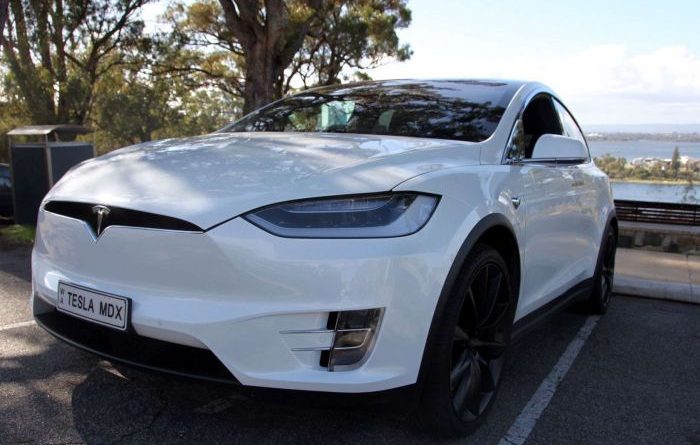Electric vehicles zap your wallet (ABC)
The big problem with electric vehicle resale prices compared to petrol, diesel and hybrid cars
Electric vehicles are growing in popularity across the globe but rapid technological advances and plummeting battery prices are shaping up as the industry’s Achilles’ heel when it comes to resale.
While the cars save consumers thousands of dollars a year in running and maintenance costs, data shows they have been depreciating much faster than petrol, diesel and hybrid cars.
The problem is they just keep outdoing themselves. This is a new concept for both the automotive industry and consumers who could, in the past, buy a car knowing its technology would not rapidly change in three to five years.
In just a few short years electric-powered machines have jumped forward in leaps and bounds in a similar fashion to how smartphones have advanced in the electronics industry.
Travelling range has dramatically improved as battery prices have fallen, meaning manufacturers can produce more for less. But it also means what was once state-of-the-art in the market is now a less valuable item, even in Australia where supply is limited.
Consumers want ‘latest and greatest’
Over the past seven years, battery costs have fallen by about 80 per cent from $1,000 per kilowatt hour (kWh) to around $200/kWh.
Ross Booth, global general manager for vehicle valuation website Redbook, said electric vehicles have traditionally lost more of their value than petrol vehicles.
 “It’s all about demand and supply — there just isn’t pent up demand for used EVs in the Australian market,” Mr Booth said.
“It’s all about demand and supply — there just isn’t pent up demand for used EVs in the Australian market,” Mr Booth said.“People want that new technology … people want to buy the latest, the greatest.
“The cost of the battery and the uncertainty is one reason in the used car market which holds back the value.
“The thing is people don’t know how long you can drive them for so they have concerns over the driveability, the cost of the battery, what happens if things go wrong.”
Data compiled by Redbook reveals that, since 2012, petrol cars have held their value the longest, followed by diesel and hybrids, while electric vehicles come in last.
Tesla continues to be the exception, which analysts attribute to its models’ long driving ranges, a well-developed charging network and software updates which continually improve the car’s performance.
Redbook said it compiled the data by analysing hundreds of thousands of data points including online transactions, prices first advertised to vehicles sold, including days to sell, along with every major wholesale transaction in major auction houses, fleet company sale transactions and car buyer contractors.
Slow uptake in Australia
Despite this, both new and used EVs are still much more expensive in Australia than other more established markets in Europe and the United States.
That comes down to a number of factors including limited government incentives to buy electric cars, import taxes on luxury cars and the fact there are far fewer EVs on our roads.
“Without government subsidies, without more electric charging stations, we still don’t believe the perception will change for consumers substantially to increase used values beyond what the traditional vehicles are,” Mr Booth said.
When it comes to electric vehicle adoption, Australia is well behind the rest of the world — the battery powered machines make up just 0.1 per cent of all cars on the road, which equates to about 4,000 vehicles.
In comparison, a quarter of Norway’s new car sales are electric; Britain, France and India have set targets to ban the sale of new internal combustion cars from 2040, while China is predicted to hold 40 per cent of the world market by that time.
Dealership seeing strong demand
Despite Australia’s slow uptake, traditional car dealer Paul Davies believes electric is the future.
He moved to diversify his offering in 2012 after almost three decades selling traditional vehicles.
Being at the frontline of sales, he said demand for EVs is strong at his business, but he acknowledges the uptake has been much slower in Australian than other parts of the globe.
 PHOTO: Car dealer Paul Davies started selling electric vehicles in 2012 as he believes they are the future of the industry. (ABC News: Kathryn Diss)
PHOTO: Car dealer Paul Davies started selling electric vehicles in 2012 as he believes they are the future of the industry. (ABC News: Kathryn Diss)“Their actual retained value is very strong compared to what they were as a new car,” Mr Davies said.
“There is very low supply, so very high demand and any car sale is about supply and demand. This morning, there were only two Holden Volts on the market in Australia, they move quickly.
“People are interested but it’s just the cost of entry in Australia is much higher than in other markets.
“We’ve had no government support for electric vehicles so it’s made it harder for manufacturers to import them and sell them for a profit, so it’s going to be a longer road in Australia than the rest of the world.”
Incentives successful overseas
Those watching the Australian market believe the key to making EVs more affordable from the outset comes down to government incentives and policy, which would lead to increased supply.
Electric car blogger and advocate Leo Kerr said he has seen EVs in the United States with relatively low mileage selling for $US6,000 ($7,500).
 PHOTO: Electric car blogger Leo Kerr says government incentives would encourage more people to buy electric vehicles. (ABC News: Kathryn Diss )
PHOTO: Electric car blogger Leo Kerr says government incentives would encourage more people to buy electric vehicles. (ABC News: Kathryn Diss )“But that’s a much bigger market, a lot more vehicles on the road over there,” Mr Kerr said.
“Unlike the rest of the world, there hasn’t been any real incentives for people to get on board this electric movement … although I think that’s just beginning to change now.
“The models that have been very successful around the world such as Norway, in the US for example, you get some sort of tax incentive or direct cash incentives, together with things like no registration fees [and] being able to use bus lanes.”
The Federal Resources Minister, Josh Frydenberg, is a well-known supporter of the industry but to date has ruled out any new incentives for consumers.
Deputy Prime Minister Barnaby Joyce also said last week it was “bleeding obvious” electric vehicle owners should be hit with a tax because they do not pay the fuel excise which contributes to road building and maintenance.




